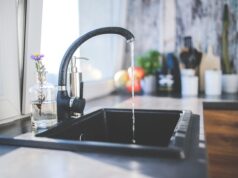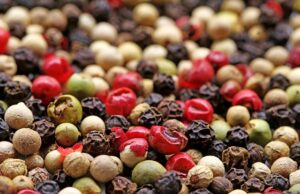Contents
Sink Drainage Explained: Learning the Path of Kitchen Waste Water
Have you ever wondered what happens to the water and food scraps that go down your kitchen sink? Understanding sink drainage is crucial to ensuring that your kitchen stays clean and functional. Let’s take a closer look at the path of kitchen waste water, step by step.
First, water and scraps enter the sink drain and make their way down the drainpipe. The drainpipe leads to a P-trap, which is a curved pipe that prevents sewer gases from entering your kitchen. After passing through the P-trap, the waste water and solids enter the main drain line, which carries the waste out of your home and into the sewer system.
It’s important to note that not all kitchen waste should go down the sink. Grease, fats, and oils should never be poured down the drain, as they can clog the pipes and cause major plumbing issues. Instead, pour them into a separate container and dispose of them in the trash.
By understanding the path of kitchen waste water, you can take steps to prevent clogged drainpipes and keep your kitchen running smoothly. Remember to only dispose of appropriate waste down the sink, and always make sure to keep your P-trap in good condition.
Sink Drainage Explained: Learning the Path of Kitchen Waste Water
Introduction
Have you ever wondered where your kitchen waste water goes after it travels down the sink drain? Understanding the path that kitchen waste water takes can help you better maintain your plumbing system and prevent drain clogs. In this blog post, we will explore the different components of sink drainage and how they work together to remove waste water from your kitchen sink.
The Kitchen Sink and Drain
The kitchen sink is typically made of stainless steel or porcelain and has one or two basins. It is connected to the drain pipe which allows water and waste to exit the home. The drain is typically located at the bottom of the sink and closed by a stopper or strainer. The stopper or strainer is used to prevent debris, such as food particles and grease, from entering the plumbing system.
P-Trap
The P-trap is a component of the drain that is located below the sink. It is designed to create a water seal to prevent sewer gas from entering the home. The shape of the P-trap creates a U-shape in the drain line which fills with water, creating the seal. It is important to keep the P-trap clean to prevent clogs and maintain the water seal.
Ventilation
Ventilation is an important component of the plumbing system. It allows air to enter the system and allows wastewater to flow freely. The vent typically extends through the roof and allows air to enter the plumbing system to balance the pressure. Without proper ventilation, water flow would be slow and clogs would be frequent.
Drain Pipes
Drain pipes are the final component of the plumbing system. They connect the sink and P-trap to the sewer or septic system. These pipes are typically made of PVC or ABS plastic and are designed to remove wastewater quickly and efficiently. It is important to keep these pipes clean to prevent clogs and maintain the overall health of the plumbing system.
Cleaning and Maintenance
To maintain a healthy plumbing system, it is important to clean and maintain all components including the sink, stopper or strainer, P-trap, ventilation, and drain pipes. Regular cleaning with a mild cleanser can help prevent odors and buildup. It is also important to avoid pouring grease and oils down the drain as they can solidify in the P-trap and cause clogs.
Conclusion
Understanding the path that kitchen waste water takes can help you better maintain your plumbing system and prevent drain clogs. The different components of sink drainage, including the kitchen sink and drain, P-trap, ventilation, and drain pipes all work together to remove waste water from your kitchen sink. By keeping these components clean and well-maintained, you can ensure a healthy and efficient plumbing system.
References:
- https://www.lowes.com/n/buying-guide/kitchen-sink-buying-guide
- https://www.bhg.com/home-improvement/plumbing/venting-and-drainage-explained-part-2/
Keywords:
Sink drainage, kitchen waste water, plumbing system, drain clogs, P-trap, ventilation, drain pipes, cleaning, maintenance, healthy plumbing system.
Frequently Asked Questions about Sink Drainage
What is the path of kitchen waste water?
The path of kitchen waste water typically starts at the sink and travels through the drain pipes, through the P-trap, and out to the sewer line or septic tank. Along the way, the water may pass through a garbage disposal or other appliance that helps remove food particles and other debris.
What is a P-trap?
A P-trap is a curved section of pipe that is installed beneath a sink to prevent sewer gases from entering the home. The P-trap creates a water barrier that blocks the gases from coming up through the sink drain.
What are common causes of clogged sink drains?
The most common causes of clogged sink drains are food particles, grease, soap scum, and hair. These items can build up over time and prevent water from flowing freely through the drain pipes.
How can I prevent clogged sink drains?
You can prevent clogged sink drains by being mindful of what you put down the drain. Avoid pouring grease, oil, or fat down the drain, and use a strainer to catch food particles. You can also periodically clean your drains with a mixture of baking soda and vinegar to help break down buildup.
Understanding Where Your Kitchen Sink Drains To
If you’ve ever wondered where your kitchen sink drains to, you’re not alone. Many homeowners don’t have a clear understanding of their plumbing system and how it works.
Where Does the Water Go?
When you use your kitchen sink, the water flows down the drain and into a pipe that connects to the rest of your plumbing system. From there, it travels through a series of pipes until it reaches your home’s main sewer line.
Why it Matters
Understanding where your kitchen sink drains to is important for a few reasons. First, it can help you identify any potential issues with your plumbing system. If you notice that your sink is draining slowly or there is a foul odor coming from the drain, it could be a sign of a clog or other problem. Additionally, knowing how your plumbing system works can help you make better decisions about what you put down the drain. For example, you should avoid pouring grease or oil down the sink, as it can solidify and cause a clog.
Conclusion
Overall, understanding where your kitchen sink drains to is an important part of maintaining your home’s plumbing system. By being mindful of what you put down the drain and keeping an eye out for potential issues, you can help ensure that your plumbing system stays in good working condition for years to come.
If you’d like to learn more about plumbing systems, check out Wikipedia’s article on plumbing.
Sink Drainage Explained: Learning the Path of Kitchen Waste Water
Introduction
- Understand how sink drainage works
- Learn about the path of kitchen waste water
The Kitchen Sink Drainage System
- Components of the sink drainage system
- Drain pipes and their functions
- Traps and their role in preventing blockages
Kitchen Waste Water Path
- How kitchen waste water flows through the drainage system
- Common plumbing problems and solutions
- Preventing blockages and keeping the sink clean
Conclusion
- Understanding sink drainage and kitchen waste water path is important for proper maintenance
- By following best practices, you can prevent plumbing problems and keep your sink functioning smoothly


































